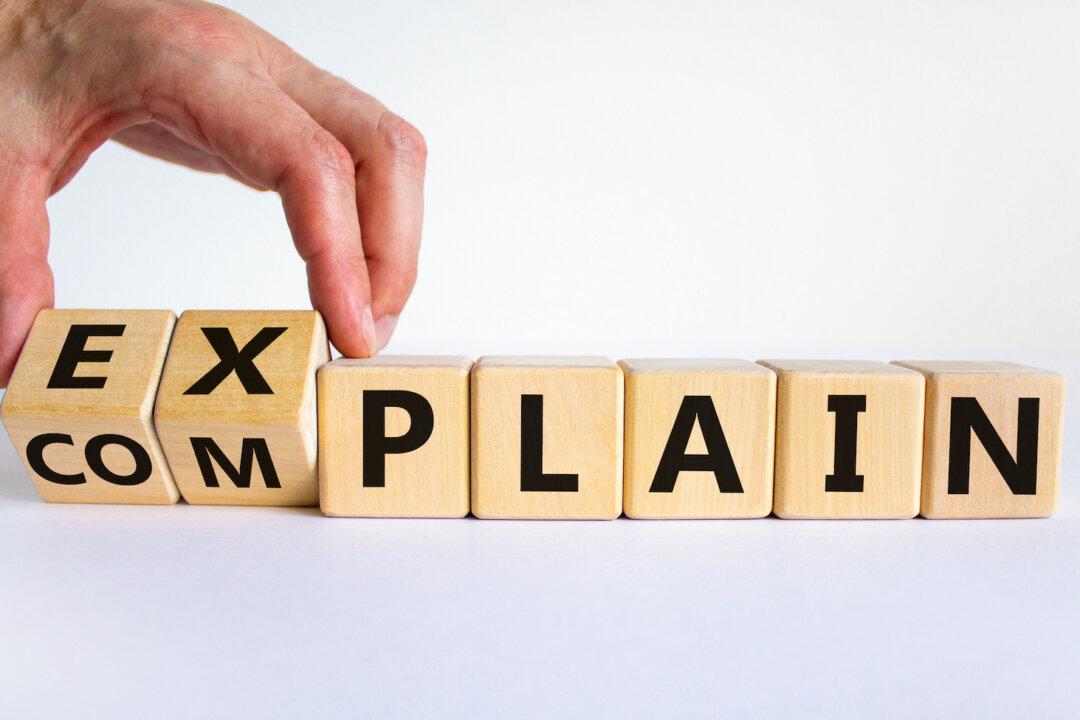I was recently going through some old family photo albums with my grandkids. One album covered the reasonably short period of time we lived in Sioux Falls, South Dakota. In fact, we only lived there for about eight months. If you want to know why we didn’t stay there very long, here’s a clue: We moved there on Jan. 1, 1977, and the temperature that day never climbed above zero! And in August, it was pushing 100 degrees with oppressive humidity. We just weren’t used to weather extremes like that. So we moved on to greener pastures (and a more temperate climate) the first chance we got.
Anyway, that photo album had a picture of the South Dakota State Penitentiary. My grandkids asked why I had a picture of a prison in with all the other family and travel photos. And that’s because I spent a fair amount of time there as part of my job with the Sioux Falls Social Security office.
And if you are wondering why, let me start with a short history lesson.
For the first half-century or more of the program, people who were getting Social Security benefits who ended up in prison still got their checks while they were incarcerated. The rationale was this: These people worked and paid taxes and earned their Social Security benefit, so they should get that earned benefit no matter where they lived—even if that was behind bars. It was their money, after all.
Part of my job in Sioux Falls had me paying a weekly visit to the state pen to handle any Social Security business for the inmates. That sometimes included routine matters such as helping a convict replace a lost or stolen Social Security card, or helping an older con with a minor Social Security issue. But most of my time during those prison visits involved taking claims for Social Security disability benefits from desperate young men who had heard through the prison grapevine that the government was handing out free money (in the form of Social Security disability checks) to inmates. That got me frustrated because I knew all the paperwork I was filling out was for naught, as all of those kind of claims were going to be denied.
But the kind of thinking that allowed incarcerated people to take their Social Security checks to jail, or apply for Social Security benefits while in jail, changed in the 1990s as the country and Congress got more conservative. I recall newspaper stories and other media reports highlighting prisoners who were supposedly “living the good life” with their Social Security checks, having far more disposable income than your average convict.
And public opinion did a complete 180-degree turn. The rationale went from, “It’s their money, and they can take it along to prison if that’s where they end up” to, “It’s the taxpayers’ money, and we are already footing their room and board in prison, so they don’t need their Social Security check.” Voters started clamoring for change, and Congress couldn’t act quickly enough to stop paying Social Security benefits to people behind bars.
So, since the 1990s, the rules have said that Social Security benefits cannot be paid for the time that a person is confined to a jail, prison, or certain other public institutions for committing a crime. Or to be more precise, benefits are suspended if someone is convicted of a criminal offense and sent to jail or prison for more than 30 continuous days. Notice that conviction is the key. Lots of people end up in jails while they are awaiting trial or pleas. But until there is a conviction with prison time involved, benefits will continue.
It’s also important to note that while the convict’s benefits are suspended, if he or she has a spouse or child getting monthly Social Security dependent checks, those benefits will continue.
Of course, most people don’t spend the rest of their lives in prison. When they are released, Social Security benefits will be reinstated, effective with the month following the month they get out.
Speaking of getting out, I’ve heard there is a rumor in many prisons that younger convicts—or, rather, soon-to-be ex-cons—believe that as soon as they are released, they can waltz into their nearest Social Security office and sign up for Social Security disability benefits and have those checks start flowing into their bank accounts. There simply is no truth to that rumor. Of course, anyone has the right to apply for Social Security disability benefits. But no one will get those benefits unless he or she meets all of the rather stringent qualifying criteria. For example, he or she must have worked and paid Social Security taxes in five out of the last 10 years. And he or she must have a disability that is so severe it is expected to keep them from being able to work for at least a year. Or he or she must have a condition that is terminal.
So far, I’ve just been talking about Social Security benefits. But the Social Security Administration runs another program for the federal government called Supplemental Security Income. SSI pays a small monthly welfare stipend (usually around $800) to low-income elderly people and to people under age 65 with disabilities who are down on their luck. SSI payments come out of general tax revenues, NOT out of the Social Security trust funds.
Anyway, SSI payment rates have always depended on a person’s living arrangements. And if you are living in a place where the government foots the bill for all your expenses (like in a jail or prison), then you simply don’t qualify for SSI while you are there. In other words, Congress didn’t have to change the law to ban SSI checks from going to prisoners. The law has always made sure that didn’t happen.
But once a person who was previously on SSI gets out, his or her federal welfare checks can be reinstated. However, if that person has been in jail for a year or more, he or she must file a whole new application for SSI.





